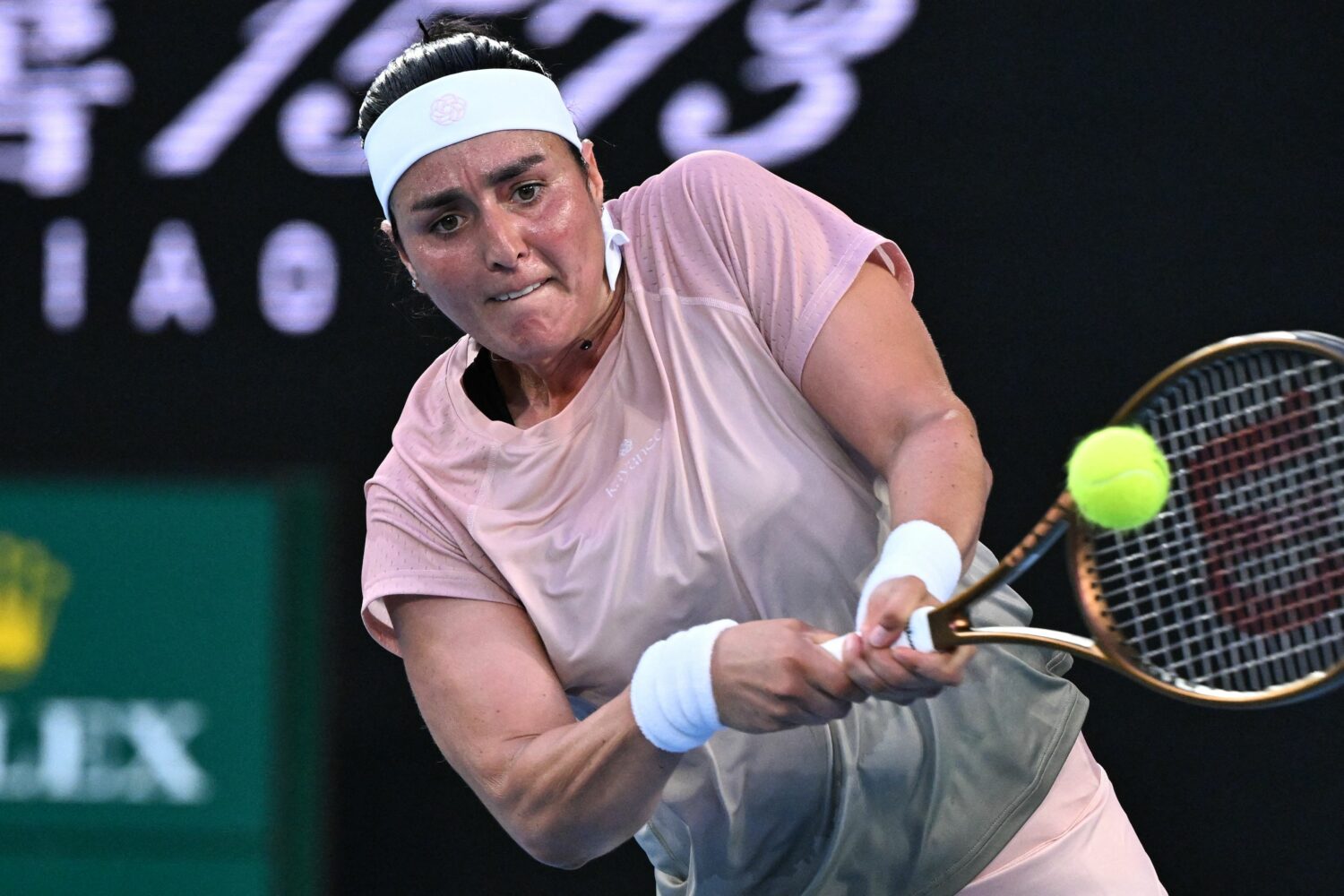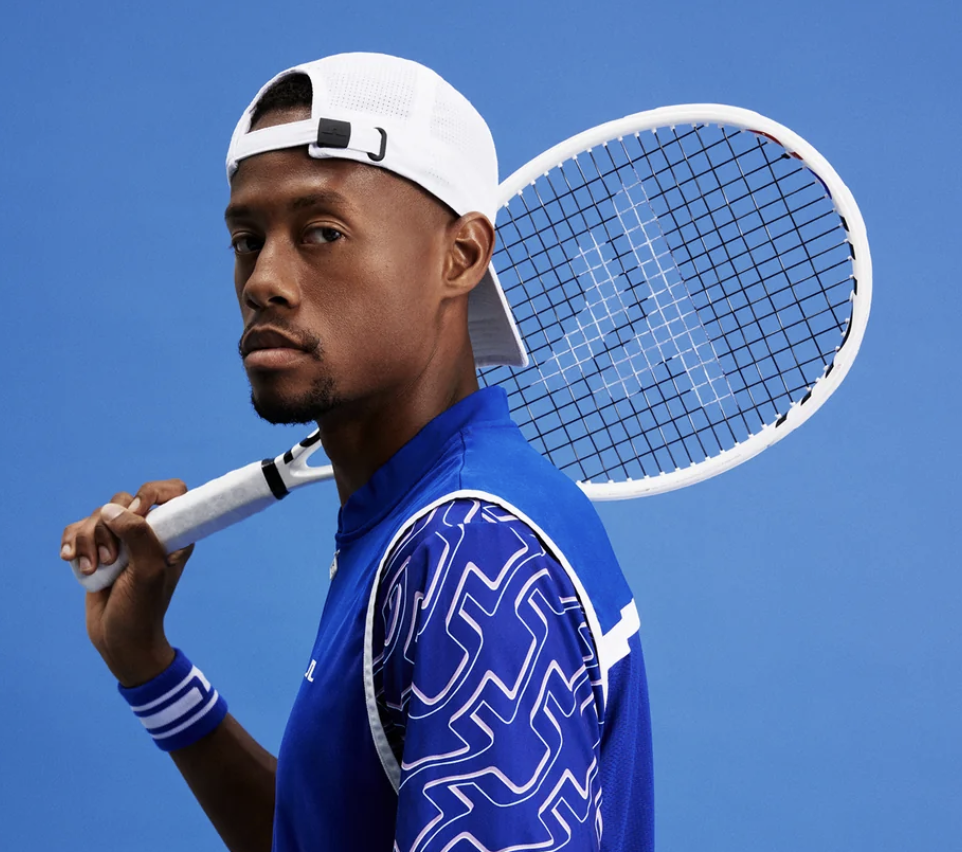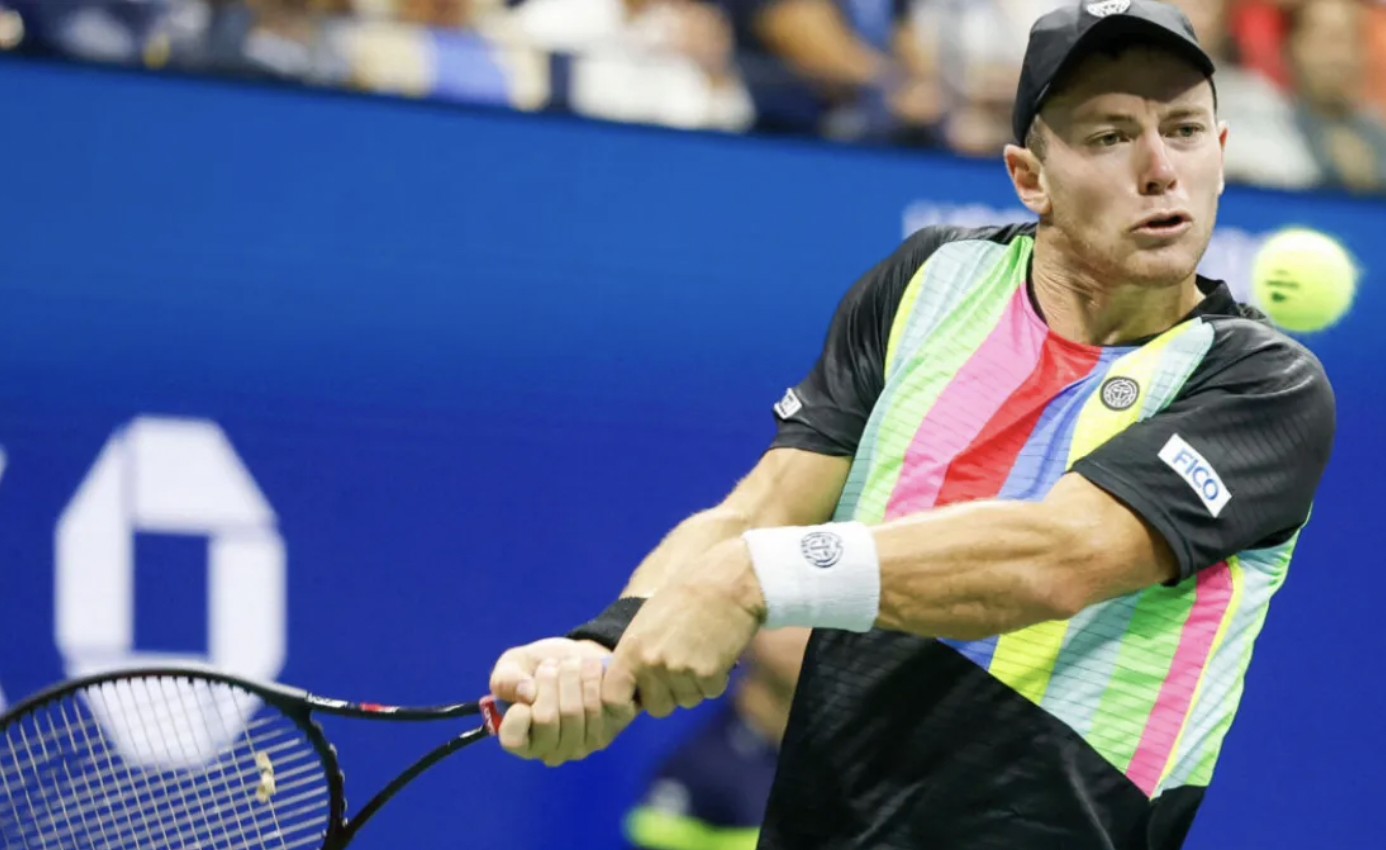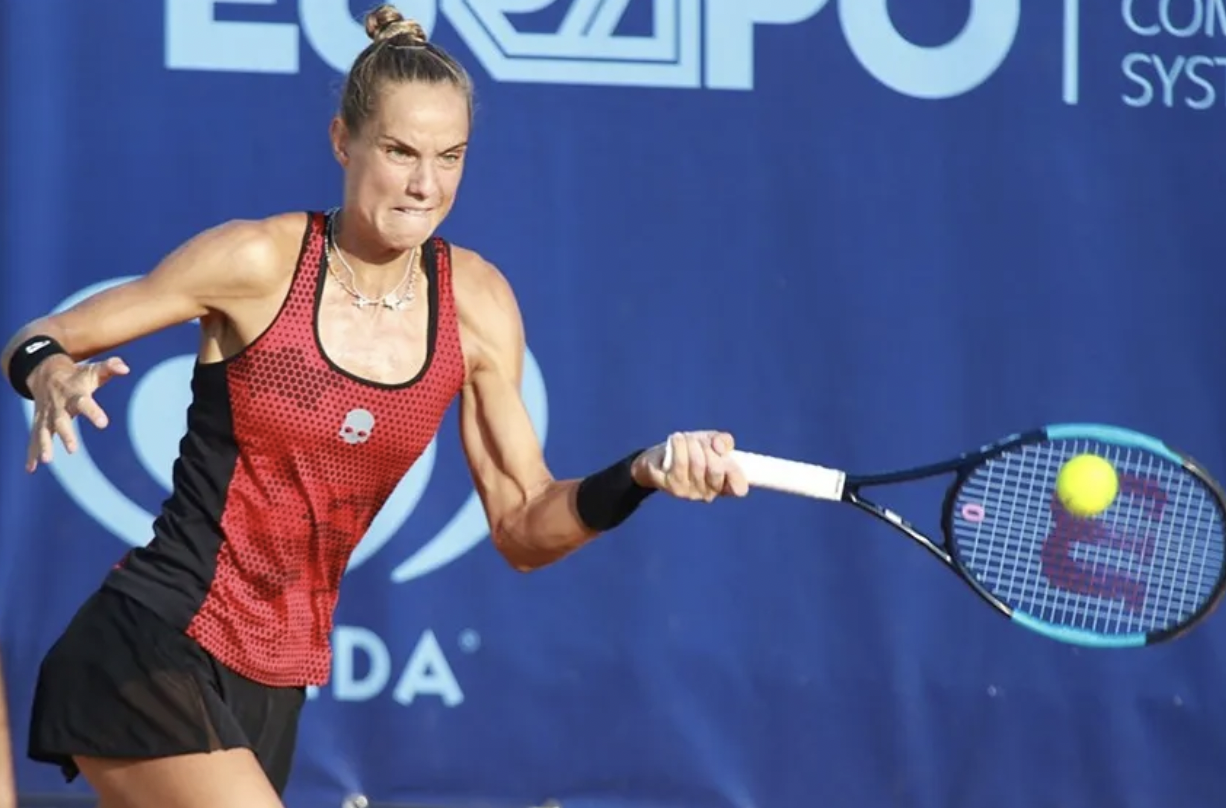Fashionable OZ
Out with Nike and Adidas, as boutique brands dominate down under

For every Grand Slam season, especially the opening of the Australian Open, tennis players’ choices make headlines. Who can forget the Ted Tinling dresses worn by the Original 9 or Serena Williams’ full-body black catsuit at the 2018 French Open? Tennis style often spills off court, too. Just consider the now mainstream style stalwarts, such as Stan Smith tennis sneaker by Adidas and the white RF cricket sweater Federer wore to the 2010 Wimbledon.
The racket sport’s connection to fashion goes back to its origin in the 1870s — a new, more active sport that welcomed women. As the two sexes could now play alongside one another, flirting and romance came with the game, thus imposing a need for style on court, often to the sacrifice of practicality or comfort. Men wore blazers and flannel trousers, while women wore corsets and long kilt skirts, sometimes all-white, cotton and linen dresses featuring lace inserts and elaborate embroidery patterns.
Since that time, however, many a designer (and tennis player) has endeavoured to make their mark on the fashion industry. One of the first was the iconoclastic Suzanne Lenglen, who became the center of a Wimbledon fashion scandal in 1919 when she wore a calf-length skirt, short sleeves and a floppy hat. The press called her indecent. Lenglen went on to win the title. In the years after, she wore a tulle wrap around her head while playing, called the “Lenglen bandeau.” It became a defining look of the Roaring Twenties.
While 2021, several tennis brands dug into their closets and recycled the styles of the 1960s and 70s (Fila, Sergio Tacchini, Ellesse and Diadora), thus rebooting the classic look of Borg, McEnroe, Vilas and Connors, 2022 and 2023 saw a number of players take on side hustles as designers. (Ostapenko in DK One and Camila Giorgi in GioMila). So far, in 2024, player have been lured by the promise of new brands created just for them in mind, as the fashion start-up takes Center Court. Here are a few that have received the most buzz (good and bad) so far.

Ons Jabeur for Kayanee
In the summer of 2022, Tunisian pro Ons Jabeur (WTA No. 6) ascended to the finals of Wimbledon and the U.S. Open and in a sense, became her own woman, doffing off her old Paris-based agency and signing with the Naomi-Osaka-Stuart-Duguid supergroup, Evolve. After losing Wimbledon for the second year in a row, she finished the year at No. 6, sacked Evolve, ditched her football-centric sponsor Lotto Sport Italia and went full Arab, hiring a Tunisian agent and becoming the exclusive representative of Kayanee, a women’s sportswear company established by Saudi Arabia’s Public Investment Fund (PIF) and designed by Princess Reema Bandar Al Saud, the great-granddaughter of Ibn Saud, the founder of modern Saudi Arabia and the Saudi Ambassador to the United States. “”I heard they called me Batman. It’s good. The vibes are good,” she told the press in Australia. “I felt like maybe Serena Williams a little bit, you know, style.”
Jabeur has been a strong proponent of Saudi Arabia’s potential involvement with the WTA and has expressed an interest in bringing tennis to the kingdom. “Of course I’m one of the players that will push to go there,” Jabeur has said. “… It’s not about the money, for me it’s about giving a chance to younger women, or any women to practice sports and discover amazing things.” So far, both Jabeur’s stance and pinkish, greyish on-court outfits have received mixed reviews. “Ugliest kit ever?” remarked one fan. “Ok maybe we need to give Lotto a call back…,” said another on X (formerly Twitter). So far, the Tunisian, who made her documentary debut earlier this month, said she was enjoying her new partnership. “You know me. I don’t do those things. I’m honestly having fun to have those different collections and feel very pampered from Kayanee. So I’m looking forward to show you more outfits,” Jabeur said.

Chris Eubanks and J. Lindeberg
Despite body-doubling for the late Arthur Ashe in the documentary Citizen Ashe and wins over fellow Americans Taylor Fritz and Ben Shelton, Christopher Eubanks (ATP No. 35) went into Wimbledon 2023 a relative unknown. He emerged a breakout star, a quarterfinalist in white Asics kit with the swooping white Technifibre racquet accentuating every shot. His height (Eubanks stands 6 feet, 7 inches), good looks and journeyman ruggedness caught the eye of Swedish golfwear designer J. Lindeberg, prompting the brand to make Eubanks its first male tennis ambassador in tennis. “It is extremely enticing to be one of the only faces of a particular brand,” Eubanks told Forbes magazine. “It allows for you to really see the growth of that brand and feel a sense of pride when you’re watching it grow, which is quite a unique opportunity. Not many players get the chance to be the face of a brand in the beginning and I am really excited about that opportunity.” J. Lindenberg’s designs are built on a taste spectrum that goes from “Mild” to “Wild”. Eubanks has fallen somewhere around a seven, choosing a mix of the company’s bolder patterns and solid colors for on court action, with a focus on material that is breathable and absorb sweat well. Off-court, Eubanks is sticking to the milder, more conservative designs, choosing fit over splash. One obvious benefit for the new partnership: longer shorts. “I’m really looking forward to having shorts and pants that fit me how they’re supposed to,” he said.

Andrey Rublev for Rublo
It’s been a year since Nike opted not to resign Russian tennis players after their contracts ended. In response, Andre Rublev (ATP No. 5) created his own clothing line that’s “not about clothing.” Rublo was created to “drive awareness around equality and kindness” with the hope of “making our world a better place,” the 26-year-old Rublev told the Tennis Channel upon launch in 2023. With similar bold colors and patterns to his Nike kit, Rublev has nonetheless traded the Swoosh logo for a pair of stylized angel wings. “I know I’m depressive and always have been thinking about life and death for too much, but before my days will end I will keep fighting for what I believe, what I love and who I love,” Rublev wrote on social media. Just like Nike did for the feisty red head, the Rublo look has been turning eyes in Melbourne — without its model cursing in Russian or smashing racquets. The latest gear breaks up a classic all-black oversized shorts and shirt with pops of green and teal on his wristbands, headband and right shoulder sleeve. Nike Vapor Pro shoes complete the look. “I said that I don’t plan to sign with anyone else no matter how much they offer me, but I want to try to create something of my own and play in it for a year and see how it goes,” Rublev said upon launch.

Dominik Koepfer and Liam Brody for Bidi Badu
“Bidi Badu” means something akin to “abracadabra.” Historically, the term developed during the times of the slave trade when slaves in Zanzibar had to entertain the sultan with magic tricks —as soon as they finished, thet said, “Bidi Badu.” Founded in Germany in March 2016, and named after a Kenyan bar, Bidi Badu’s bold and whimsical color schemes might not suite the Wimbledon set, but tennis players who favour the latest trends over old traditions. The logo even emulates a Kenyan mask. Owned by Spodeco GmbH in Cologne, Germany — an online tennis shop that manufactures not only Bidi Badu, but also tennis hardwear, tennis fitness tools, tennis balls and court equipment — Bidi Badu also promotes tennis in Kenya through the Bidi Badu Development Camp. So far, Bidi Badu has sponsored many British up-and-comers, including Liam Brody (ATP No. 98) and for a time, doubles comeback kid, Marcus Willis (ATP No. 133/doubles). The biggest names on its roster now is German player Dominik Koepfer (ATP No. 62).

Arantxa Rus and Marton Fucsovics for Hydrogen
For a while, lots of companies co-opted the skull logo, but only one made it stick: Hydrogen. Founded by unconventional Italian designer Alberto Bresci under the philosophy that Hydrogen is a fundamental element for happiness — and the right clothing items bring happiness — the brand has a reputation for collaborations with prestigious businesses, from Superga to Fiat. In his many research trips, from Japan to the United States, Bresci noticed the use of skulls, although in Italy they were not considered popular. He nonetheless revised it again with a very clean design and an upturned heart as a nose. Using a fine selection of materials and sartorial cuts, items of the collection are manufactured by bespoke Italian tailors. For many years,French player Adrian Mannarino (ATP No. 19) wore Hydrogen’s off-beat designs from lightning bolts to arrays of stars. But the brand, which also dabbles in Formula One racing kit, among other sports, now has Fabio Fognini (ATP No. 103) and Marton Fucsovics (ATP No. 70), who switched from Hungarian streetwear label Dorko (DRK). Rus, age 33, switched over last year.

Jiri Lehecka for Le Coq Sportif
One of the oldest sportswear brands in the world, the distinct French Coq and Tri-Color has been worn by everyone from Arthur Ashe to Yannick Noah. What started out as a collection of wool clothes in under the eye of founder Émile Camuset, eventually became a company known for its collection of cycling jerseys in 1929. From there, the brand took off, launching the first ever tracksuit, the chándal (also known as “the Sunday clothing”) and reached its peak in the 1950s signing the French national football and rugby teams. Since the 80s, however, Le Coq Sportif has been a bit in decline… until just last week, when Czech upstart Jiri Lehecka (ATP No. 71) appeared in the new purple performance collection receiving rave reviews. Even if Lehecka doesn’t keep upsetting top seeds, the brand should get a long-overdue boost sponsoring the Paris Olympic team this summer.
What happened to…?
1. Fred Perry: After being launched in the 1950s by Fred Perry, who held the world’s number-one rank in two sports, then seen on the chests of Andy Murray, Fred Perry’s association with Neo-Nazi gangs and football hooligans killed its mojo. Expect an Original Penguin-style reboot, soon, however.
2. Under Armour: What brand hasn’t Andy Murray worn? After getting dropped post-hip-surgery and going all-in with Castore, the American sporting conglomerate, which started out in American football is now ubiquitous in every other sport but tennis.
3. Ellesse: While many high-profile players such as Boris Becker and Tommy Haas endorsed Ellesse — now British owned — in the past, Ellesse lost Johanna Konta when she retired in 2021. ATP No. 195 Ryan Penniston and wheelchair standout Alfie Hewitt now sport the tennis-ball-and-ski-logo.
4. Sergio Tacchini: The namesake brand of Italian tennis professional Sergio Tacchini counts many past high-profile players, such as Jimmy Connors and Mats Wilander. Currently, none of the top 100 players have been seen wearing Sergio Tacchini apparel since Pete Sampras, and Martina Hingis in the early aughts.